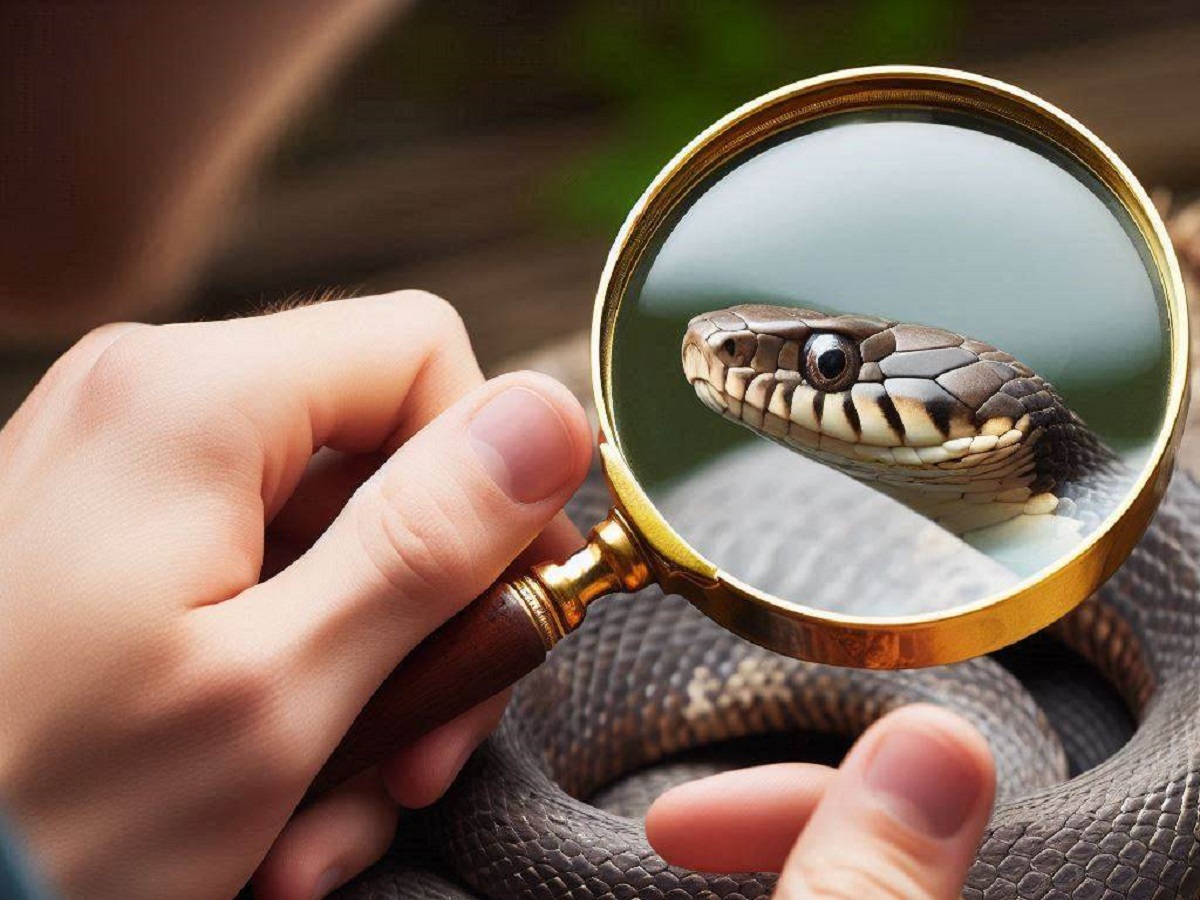How to Know if a Snake is Venomous

Encountering a snake can be unsettling, especially if you’re unsure of its venomous status. While it’s essential to respect all snakes and maintain a safe distance, knowing some key characteristics can help you differentiate between harmless and potentially dangerous species. Remember, accurate identification is crucial, and if you’re uncertain, it’s always best to leave the snake alone and contact a wildlife professional.
The Challenge of Identification
Identifying a snake as venomous solely based on appearance can be tricky. Many harmless snakes mimic the appearance of venomous ones to deter predators. This protective mechanism, known as mimicry, can lead to misidentification and unnecessary fear. Additionally, some venomous snakes exhibit characteristics similar to non-venomous species, further complicating matters.
Key Features to Observe
While not foolproof, observing certain physical attributes can provide clues about a snake’s potential venomousness. However, it’s essential to consider these factors collectively rather than relying on a single characteristic.
- Head Shape: Many venomous snakes, particularly pit vipers like rattlesnakes and copperheads, have triangular-shaped heads distinct from the body. However, some non-venomous snakes can flatten their heads to mimic this feature.
- Pupil Shape: Most venomous snakes have vertical slit-like pupils, resembling a cat’s eye. However, this is not a universal rule, as some venomous species, like coral snakes, have round pupils.
- Body Shape: Venomous snakes often have thicker bodies compared to non-venomous snakes of similar size. This is because they require larger venom glands. But again, this is a general observation and not always accurate.
- Scales: The arrangement of scales on a snake’s belly can be a helpful indicator. In some venomous species, there is a single row of scales leading to the anal plate. However, this feature is not present in all venomous snakes.
- Pit Vipers: A reliable indicator of venomous snakes in North America is the presence of heat-sensing pits located between the nostrils and eyes. These pits allow pit vipers to detect warm-blooded prey.
The Importance of Regional Knowledge
Knowing the types of snakes common to your region is crucial. Familiarizing yourself with the venomous and non-venomous species in your area will significantly improve your ability to identify snakes accurately. Local herpetological societies or wildlife agencies can provide valuable information and resources.
Debunking Common Myths
Several common beliefs about identifying venomous snakes are inaccurate. Let’s dispel some of these myths:
- The “Red Touch Yellow, Kill a Fellow” Rhyme: This rhyme is often used to differentiate between coral snakes and non-venomous mimics. While it holds true in some cases, it’s unreliable and can lead to misidentification.
- Handling Snakes for Identification: This is extremely dangerous and should never be attempted. Even non-venomous snakes can bite when threatened.
When in Doubt, Leave It Alone
If you encounter a snake and are unsure of its venomous status, the safest course of action is to leave it alone. Avoid provoking the snake, and maintain a safe distance. Observing the snake from a distance can help you gather information without putting yourself at risk.
Seeking Professional Help
If you suspect a venomous snake is on your property or if you’ve been bitten, contact a professional wildlife removal service or your local animal control agency. They have the expertise to handle the situation safely and effectively.
Remember, the best way to prevent snakebites is to be cautious when hiking or spending time outdoors. Wear appropriate footwear and clothing, and avoid areas where snakes are likely to be present. By understanding snake behavior and respecting their space, you can minimize the risk of encounters and enjoy the outdoors safely.
While this information can be helpful, it’s essential to approach snake identification with caution. Always prioritize safety and seek professional assistance when necessary.
Additional Tips:
- Take a photo of the snake if possible, but maintain a safe distance.
- Learn about the native snake species in your area.
- Attend educational programs or workshops on snake identification.
- Respect all wildlife and avoid disturbing snakes.
By following these guidelines and staying informed, you can increase your knowledge of snakes and reduce the risk of encountering dangerous situations.






